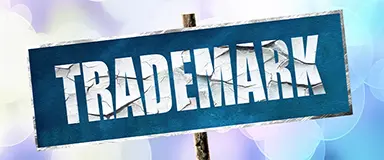Complete step-by-step guide to registering a trademark with the USPTO in 2025. Learn filing requirements, costs ($350 base fee), timelines (12-18 months), and maintenance requirements.
What Is an International Trademark and How Does It Work?
Written by Emily Brooks ·

In today’s digital-first world, it’s easier than ever to launch a brand with global reach. You can set up a website, open an e-commerce store, and promote your products on social in a matter of days. However, with that level of reach comes new risks, especially when it comes to protecting your brand. If you’re trading in more than one country or planning to, securing your trademark internationally should be a priority.
But what exactly is an international trademark? Is there a single, universal system that protects your brand in every country? The answer isn’t straightforward. There is no single “worldwide” trademark registration. Instead, international protection relies on a combination of systems and treaties that help businesses register their trademarks across borders.
Let’s break it down.
There’s No One-Size-Fits-All Global Trademark
One of the biggest misconceptions is that there’s a global authority where you can register a trademark that covers every country; unfortunately, that’s not the case. Trademark rights are territorial, meaning they only apply in the jurisdictions where the mark is officially registered or legally recognized.
Many businesses looking at the global market use the Madrid System. While it doesn’t create a global trademark, it significantly simplifies the process of applying for protection in multiple countries at once.
The Madrid System Explained
The Madrid System, administered by the World Intellectual Property Organization (WIPO), is the most widely used pathway to international trademark protection. It enables businesses to apply for trademark protection in over 130 member countries through a single application.
Here’s how it works:
- Start with a national application: You must first register or apply for a trademark in your home country. This is known as the basic application.
- Submit an international application: Once you have a basic application, you can file an international application through your national or regional IP office. You specify which Madrid System member countries you want your trademark protected in.
- Centralized management: Instead of dealing with separate trademark offices and procedures, you submit one application, in one language, with one set of fees. WIPO handles the administrative work and forwards your application to each selected country for review.
The result is a streamlined process that saves time and reduces the cost and complexity of international filings, especially valuable for small businesses or startups looking to expand quickly.
There Are Some Limitations
While the Madrid System is efficient, it does come with a few drawbacks. The biggest risk is the dependency period: For the first five years, your international registration is tied to your basic application. If your home trademark is refused, cancelled, or limited during that time, your entire international registration could collapse, a situation known as “central attack.”
There’s also the fact that not all countries are part of the Madrid Protocol. If you want trademark protection in countries outside the system, such as some emerging markets, you’ll still need to file individual applications in those jurisdictions.
Alternative Route: Country-by-Country Filing
If the Madrid System doesn’t cover your target countries or if you prefer a more tailored approach, you can file directly with each national or regional trademark office. This method offers more control and flexibility, particularly in places with unique legal requirements or strict examination processes.
However, it’s more complex. Every country has its own procedures, languages, classifications, and timelines. What’s acceptable in one jurisdiction might be refused in another. That’s why it’s strongly recommended to work with trademark professionals who understand the specific rules in each region.
Why International Trademark Protection Matters
It’s easy to assume that brand protection is only necessary once you’ve hit a certain size or revenue. But proactive trademark registration is one of the smartest moves a growing business can make. The moment your brand starts gaining visibility in other countries, whether through online sales, franchising, or international partnerships, you will be exposed to the risk of someone else registering your name, logo, or slogan.
That’s not just an inconvenience. Trademark conflicts can lead to:
- Costly legal disputes
- Loss of sales and market access
- Damage to your brand’s credibility
- Forced rebranding in key markets
Worse, in some countries, first-to-file rules apply, meaning that whoever registers the mark first gets the rights even if they have no legitimate connection to your brand. This practice, called trademark squatting, is common in certain jurisdictions and can completely derail your expansion plans.
Final Thoughts
There’s no single “international trademark,” but there are simplified ways of protecting your brand globally.
Systems like the Madrid Protocol make international protection more accessible than ever, and filing nationally remains an option where needed. What matters most is having a global brand strategy that aligns with your business goals.
Whether you're just beginning to expand or already operating across borders by understanding how trademarks work internationally is key to safeguarding your business.
Explore Protect.TM’s global trademark solutions to learn how we support brands worldwide to navigate the world of international trademarks.


